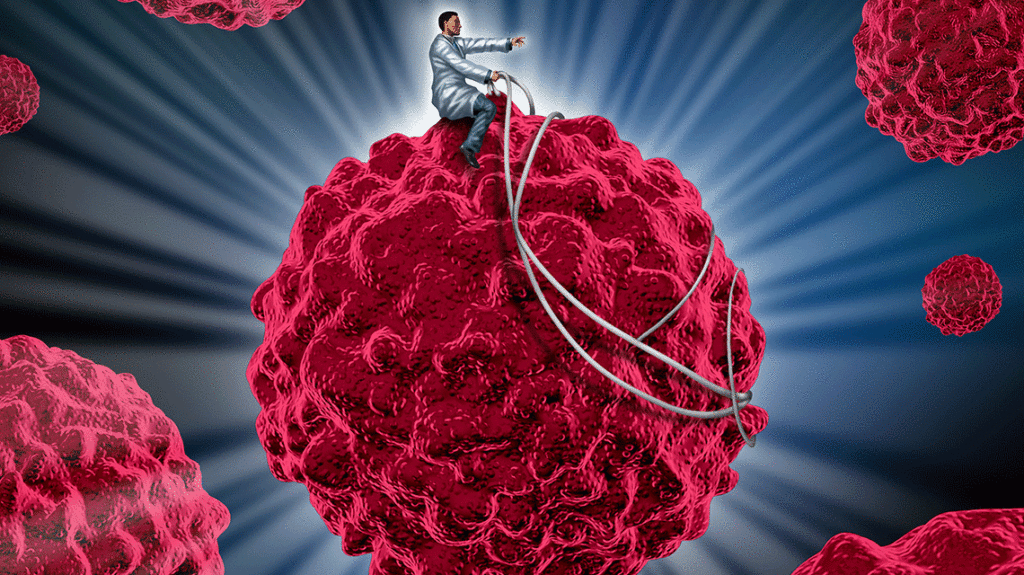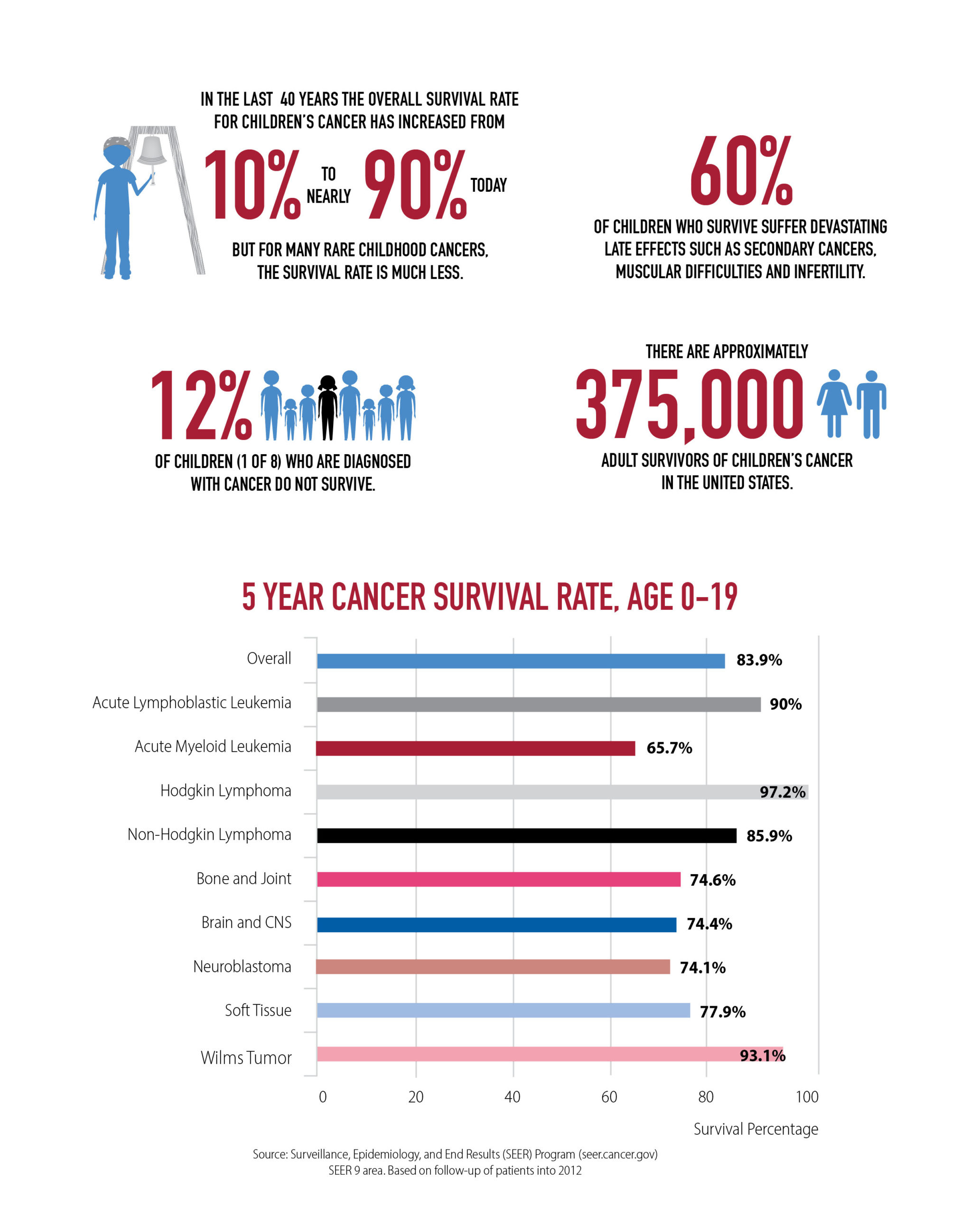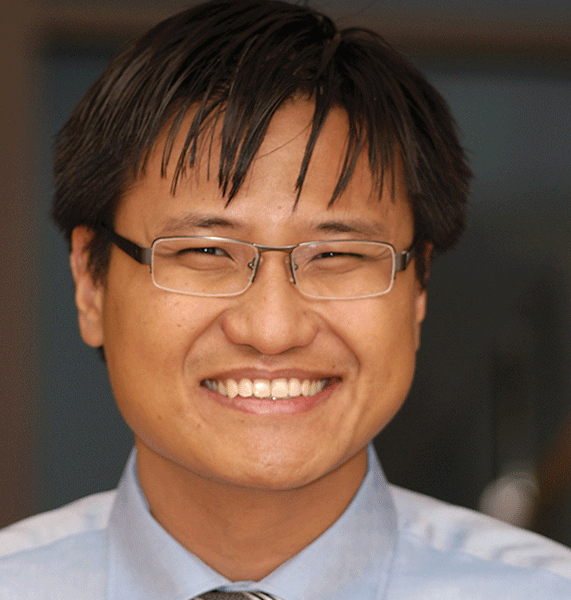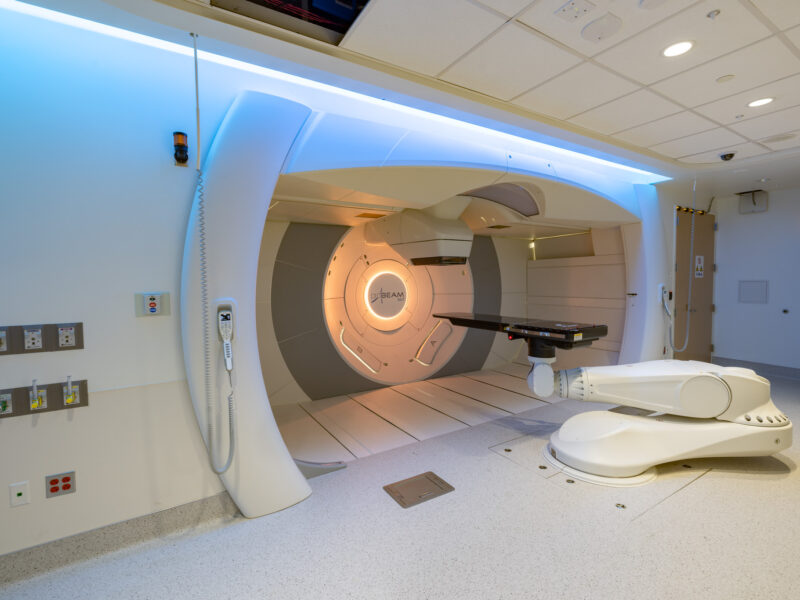Harnessing the Immune System: Has the Cure for Cancer Been Within Us All Along?
Harnessing the Immune System: Has the Cure for Cancer Been Within Us All Along? https://pediatricsnationwide.org/wp-content/uploads/2016/10/cancer-header-1024x575.gif 1024 575 Abbie Miller Abbie Miller https://pediatricsnationwide.org/wp-content/uploads/2023/05/051023BT016-Abbie-Crop.jpg- October 18, 2016
- Abbie Miller

By learning to manipulate the immune system to target cancer cells, clinician-scientists are ushering in a new era in cancer treatments.
The advances in cancer immunotherapy have been headline-making, and some clinical studies have produced stories of near-miraculous recoveries.
From the immunotherapy drug credited with curing former president Jimmy Carter’s cancer (pembrolizumab) to the promising results of CAR T cell clinical trials, advances in cancer immunotherapy have inspired politicians, investors and patients. With fewer, more manageable side effects, immunotherapy is demonstrating an advantage over other therapies in terms of quality of life and showing promising potential as a cancer treatment.
The concept is actually quite simple.
“The immune system rejects cancer far more often than we give it credit for,” says Dean Lee, MD, PhD, director of the Cellular Therapy and Cancer Immunotherapy Program in the Division of Hematology/Oncology/BMT and Center for Childhood Cancer and Blood Diseases at Nationwide Children’s Hospital. “Immunotherapy is focused on harnessing and manipulating that natural ability to fight cancers that gain footholds. The ultimate goal is to enable the body to defend itself.”
Yes, it’s a simple concept, with promising stories. But there have also been losses, unexpected adverse events, trials put on hold, and new questions to answer. And most of the immunotherapy research and trials have been focused on adult patients. Just as children are not miniature adults, childhood cancer is not the same as adult cancer. Childhood cancers originate from different tissues, are driven by different genetic abnormalities, and even when similar to cancer in an adult, they often respond to therapies differently.
Current investigations into immunotherapy for pediatric cancer range from monoclonal antibody and cytokine studies to cellular therapy and oncolytic virotherapy. As understanding of the immune system has developed, so has the ability to manipulate it. From creating small molecules to large proteins, advances in manipulating the cellular components of the immune system to develop targeted therapeutics has resulted in an arsenal of monoclonal antibodies and cytokines.
Now, scientists are moving on to whole cell therapy and virotherapy to influence system-level immune responses.
“This is an exciting time in immunotherapy,” says Jeffery Auletta, MD, director of Blood and Marrow Transplant and Host Defense Programs at Nationwide Children’s Hospital. “Used in conjunction with current treatments such as hematopoietic cell transplant and conventional chemotherapy, cell-based immunotherapy can be the magic bullet to eliminate cancer and offer the best chance for complete remission and malignant disease cure.”
BREAKING NEW GROUND WITH WHOLE CELLS
The implications and applications of cellular therapy are widespread. Cellular therapies are being used to avoid transplant regimen-related toxicity, augment hematopoietic cell engraftment, enhance immune reconstruction, and prevent and treat infection, graft versus host disease (GvHD) and malignant disease relapse by targeting and destroying cancer cells.
“With cellular therapy, the whole is greater than the sum of its parts,” says Dr. Auletta, who is also an associate professor of Pediatrics at The Ohio State University College of Medicine and member of the Leukemia Research Program at The Ohio State University Comprehensive Cancer Center. “Engineered cells are responsive and prolific and, hopefully, will yield therapies that are less toxic than the current cytokine and monoclonal antibody therapies.”
Some of the most promising approaches are focused on manipulating T cells and Natural Killer (NK) cells.
Functionally, NK and T cells have similarities. They both have initial recognition mechanisms through major histocompatibility complex (MHC) signaling.
They both exist to kill cells that pose a threat to the body. However, as part of the adaptive immune system, T cells are created and primed to recognize specific antigens. As part of the innate immune system, NK cells function on a broader “self versus nonself ” standard. They see MHC as an inhibitory signal – a “safe” signal of being self. They look for cells expressing additional signals of being “stressed self ” or “foreign.”
When the balance of self versus nonself is tipped toward nonself, the NK cells take action against the offending cell.
“T cells are the contract killers of the immune system,” says Dr. Lee, who is also director of Cellular Therapy at The Ohio State University Comprehensive Cancer Center. “They’ll ignore pretty much every other cell except their target. However, NK cells are more like the border patrol. They’re looking at passports – MHC – and making judgments about what looks dangerous.”
T CELLS: TO MODIFY OR NOT TO MODIFY
When it comes to T-cell treatments, there are two main approaches: genetically modify the T cells to target a specific antigen then infuse them into the body or select unmodified T cells that already recognize the antigen and infuse them.
CAR T cells are genetically modified to express a specific antigen receptor derived from a monoclonal antibody, instead of manufacturing and infusing the monoclonal antibody. They are the next chapter in the monoclonal antibody story.
T-cell therapy, in general, is like giving a hungry person a live chicken rather than a carton of eggs. The chicken (T cell) can lay more eggs, reproduce to make more chickens, and adapt to its environment. The carton of eggs (monoclonal antibodies) will help for a while, but eventually, the person will need more eggs.
So far, clinical trials of CAR T-cell therapy are reporting results that indicate it will be a “game changer” for B-cell leukemias and lymphomas.
“Immunotherapy holds a lot of promise,” says Dr. Lee. “But we are also starting to get a deeper understanding of the responses and toxicities. We can’t underestimate what the immune system can do.”
At Children’s National Health System, Conrad Russell Cruz, MD, PhD, and his colleagues are actively involved in trials studying T cells specific to leukemia antigens, which are enriched and added back to the immune system. Unlike CAR T cells, these are not genetically modified.
“While we hope to eventually replace chemotherapy with this protocol, our current protocols include chemotherapy,” says Dr. Cruz, who is the director of Translational Research Laboratories in the Center for Emerging Technologies in Immune Cell Therapy at Children’s National. “There is a synergistic effect. The chemotherapy primes the host for a better immune system response.”
A SUPPORTIVE APPROACH
Across the country, institutions are investigating how T-cell therapy can support patients after blood and marrow transplants.
“After BMT, there is a window of time when the newly transplanted immune cells are growing and developing,” Dr. Cruz explains. “During this time, the child is particularly vulnerable. The absence of the old immune system combined with the immature new immune system results in the child having no effective immune system.”
“We give ‘ready to kill’ cells grown from the same source as the transplanted immune system,” says Dr. Cruz. “The transplanted mature cells are specific to selected viruses as much as possible.”
Similarly, at Baylor College of Medicine and Texas Children’s Hospital, Helen Heslop, MD, DSc, and colleagues use T-cell therapy as a supportive treatment following blood and marrow transplant by giving infusions of T cells specific to viral infections after transplant.
“We typically use this if someone develops an infection,” says Dr. Heslop, director of the Center for Cell and Gene Therapy at Baylor, Houston Methodist Hospital and Texas Children’s. “Although, we can use it prophylactically if a patient is high risk for viral infection.”

IDENTIFYING THE TARGET
T-cell therapies currently in clinical trials are highly specific. However, a clear target is not always available. To identify an appropriate target, one needs to find a mutation in a gene coding for a protein that is expressed on the cell surface (antigen). The antigen also needs to be specific only to the cell types that need to be eliminated.
In some cancers, such as melanoma, this is a straightforward task. Adult melanoma is understood as a very immunogenic cancer. It is one of the most mutated cancers, with at least 400 mutations in the average melanoma. It is very likely to find an antigen specific to melanoma for T cells to recognize.
Pediatric cancers, on the other hand, often have a low number of mutations. Sarcoma and brain cancers have as few as 20 mutations.
“There may be a low opportunity for success with these techniques for cancers that have few mutations,” explains Dr. Lee. “If you can’t rely on mutated proteins, what else can we use?”
A considerable challenge for future successes of T-cell therapy is to find a target on a solid tumor that isn’t found in normal tissue.
“T-cell therapy for solid tumors has additional challenges,” says Dr. Heslop, who is also associate director of Clinical Research in the Dan L. Duncan Comprehensive Cancer Center at Baylor College of Medicine. “Not only is it harder to find target antigens that are expressed on tumor cells but not on normal cells, but solid tumors are much less accessible to T cells due to a denser solid mass and the fact that the tumors also possess more evasion mechanisms.”
NATURAL KILLER CELLS: AN INNATE ANSWER
Each person has an estimated 10,000 different kinds of NK cells. And while researchers have known about NK cells since the 1970s, it wasn’t until the late 1990s that the first major receptors on NK cells were identified.
NK cells have also been very difficult to grow in the lab. In 2012, Dr. Lee and colleagues published a method for culturing them that has become an important tool for NK cell research and for generating large numbers of these cells for clinical trials.
As with T cells, researchers are working on two broad applications of NK cells: supportive care following traditional therapies and treating the primary cancer. Traditional cancer treatments – chemotherapy and radiation – are toxic to NK cells. One application of supportive NK therapy is to restore them in patients after chemotherapy and radiation treatments.
“We generate NK cells with a young phenotype and give them back to patients in high doses after their own NK cells have been wiped out,” says Dr. Lee.
An upcoming clinical trial at Nationwide Children’s will use NK cells in conjunction with dinutuximab. Dr. Lee, who joined Nationwide Children’s in July 2016, is working to build cellular therapy trials that will be supported by a new good manufacturing practice (GMP) production facility in The Research Institute at Nationwide Children’s, where the NK cells will be made for infusion.
NK cells are still bound by the rules of antigens and targets, though less specifically so than T cells. According to Dr. Cruz, this makes it possible to consider an NK cell approach to solid tumors. “We’re developing protocols to investigate NK cells for neuroblastoma and pediatric brain tumors,” he says. “NK cells are innate immune cells, meaning they are instrumental in protecting the body as a first-line defense as well as activating other immune responses. By harnessing this functionality, we could make a big impact on these difficult to treat tumors.”
“It’s important to remember that T-cell therapy and NK-cell therapy are not an either/or proposition. We may find that some cancers respond better to one than the other. And at some point, these will likely be combined to work synergistically,” says Dr. Cruz.
INFECTING CELLS TO MANIPULATE IMMUNITY: VIROTHERAPY
Immunotherapy is about more than injecting whole cells and antibodies. At its core, it’s about manipulating and controlling the immune response to cancer.
Another way that researchers are manipulating the immune system to attack cancer is through oncolytic virotherapy.
The use of viruses to infect and kill tumor cells is a booming area of research, with the first FDA approval of a virus for the treatment of cancer last year. In developing oncolytic virotherapy, researchers are also learning more about how cancers evade the immune system.
If a cancer cell becomes infected with a virus, it sometimes begins to send out signals that call in T cells to dispatch the virus-infected cancer cell, explains Timothy Cripe, MD, PhD, division chief of Hematology/Oncology/BMT at Nationwide Children’s.
“In virotherapy, we’re finding that, while we can use viruses to infect the cancer and potentially destroy it, the bigger impact is on immunity,” says Dr. Cripe, who is also a principal investigator in the Center for Childhood Cancer and Blood Diseases in The Research Institute at Nationwide Children’s. “Could virotherapy be combined with T cells to tag and kill tumor cells? That’s a question we hope to answer.”
In this case, the virus didn’t kill the cell, but the virus was instrumental in enabling the immune system to identify and kill it.
In some cases, viruses interfere with the “shield” that the tumor puts up to protect itself from the immune system. The exact mechanisms for this activity are unknown. This effect of virotherapy is particularly intriguing for solid tumors, which create a microenvironment akin to a fortress to protect itself from the immune system. If the virus can infect the tumor cells, either by injection or another mode of infection, it could potentially dismantle the system from the inside.
In 2015, Amgen Tvec became the first FDA-approved oncolytic viral therapy in the United States. “We are excited to be part of the Amgen Tvec pediatric trial, as this drug shows potential not only for melanoma but for any solid tumor that can be injected with the drug,” says Dr. Cripe, pictured left, who is also professor of Pediatrics at The Ohio State University College of Medicine.
References:
- Fischbach MA, Bluestone JA, Lim WA. Cell-based therapeutics: The next pillar of medicine. Science Translational Medicine. 3 Apr 2013;5(179):179ps7.
- Lankester AC, Locatelli F, Bader P, Rettinger E, Egeler M, Katewa S, Pulsipher MA, Nierkens S, Schultz K, Handgretinger R, Grupp SA, Boelens JJ, Bollard CM. Will post-transplant cell therapies for pediatric patients become standard of care? Biology of Blood and Marrow Transplantation. 2015;21(3):402-411.
- Kannan GS, Aquino-Lopez A, Lee DA. Natural killer cells in malignant hematology: A primer for the non-immunologist. Blood Reviews. 2016 Sep 9. [Epub ahead of print]
Photo credits (photography): Nationwide Children’s (portraits of Dr. Lee, Dr. Cripe, and Dr. Auletta), Baylor (Dr. Heslop), Children’s National (Dr. Cruz)
Image credits (illustration): Adobe Stock
About the author
Abbie (Roth) Miller, MWC, is a passionate communicator of science. As the manager, medical and science content, at Nationwide Children’s Hospital, she shares stories about innovative research and discovery with audiences ranging from parents to preeminent researchers and leaders. Before coming to Nationwide Children’s, Abbie used her communication skills to engage audiences with a wide variety of science topics. She is a Medical Writer Certified®, credentialed by the American Medical Writers Association.
-
Abbie Millerhttps://pediatricsnationwide.org/author/abbie-miller/
-
Abbie Millerhttps://pediatricsnationwide.org/author/abbie-miller/
-
Abbie Millerhttps://pediatricsnationwide.org/author/abbie-miller/
-
Abbie Millerhttps://pediatricsnationwide.org/author/abbie-miller/











